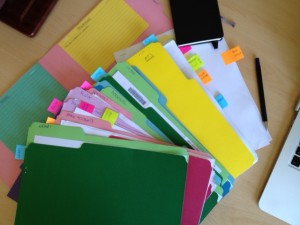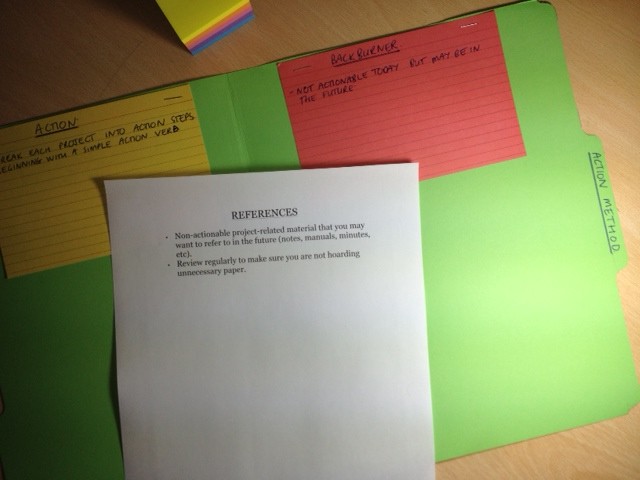I’ve tried so many different kinds of organizational software, that it’s become a bit of a standing joke in my family. Over the course of my ministry I’ve probably spent a small fortune on various programs and Apps that have promised to get me organized and efficient.

And I’ve now come full circle, because I’m returning to paper. There’s just something about the physical act of writing something down with a real pen on real paper that increases ownership, responsibility, and accountability – whether it’s the daily to-do list or personal banking.
Software promises more efficiency, but it’s just too easy to scan the debits with the eye and have no real sense of spending, or to have the to-do list hanging out of sight somewhere in the digital ether and nothing is ever done!
When I have to write out what I spend every day, and when I have to re-write my to-do list every evening, it makes a much greater impression and forces me to take certain actions. Put simply, paper produces more guilt than pixels! Good guilt, though.
But what kind of paper system? For project management and to-do lists, I’ve not come across anything as simple and effective as Scott Belsky’s Action Method as outlined in Making Ideas Happen. It can be broken into three main parts: Action Steps, References, and Backburner Items.
Action Steps
- Treat every idea as a project (“ideas” also include things like personal finances, organizing a birthday party, re-arranging the furniture).
- Break each project into action steps beginning with a simple action verb (e.g. write letter to John, pay gas bill, etc.).
- Write it down or it won’t register.
- Prioritize your top 5 projects, and then prioritize the important and the urgent to maintain incremental progress and momentum.
References
- Non-actionable project-related material that you may want to refer to in the future (notes, manuals, minutes, etc).
- Review regularly to make sure you are not hoarding unnecessary paper.
Backburner List
- Not actionable today but may be in the future (ideas without a budget, something you want to do sometime).
How to organize all this? Belsky suggests a folder with your project name on it. The Action Steps are then attached to the inside cover to keep them as prominent as possible for daily review and implementation. The Backburner List is attached to the inside of the back cover, and in between are the References.

Some other hints from the book:
- Get every action item out of your various Inboxes and into one of your projects.
- Pick a regular time to review each day and plan for the next, and do it at that time consistently to make it stick.
- Customize the method to suit you as “the more you enjoy your method, the more you will be committed to it.”
- Use colorful, quality administrative materials because, as usability guru Donald Norman said, “attractive things work better.”
- Pick five items each day that you will definitely focus on to complete.
- Celebrate progress to maintain momentum.
There are some similarities with Dave Allen’s Getting Things Done, but this method is much simpler and more suitable for non-corporate types.
Although there’s still a learning curve in setting this administration up, and getting organized means less time for creative work, in the long run not only will more ideas happen, but more ideas will be generated because of the joy of seeing our “genius” moments turned into reality.
And yes, there is a software version of the Action Method, but I’ll be sticking with paper!
My previous posts on Making Ideas Happen:
Making Ideas Happen: 99% Perspiration
A Swear Word for Creative Types
Pingback: Latest Links | blog of dan